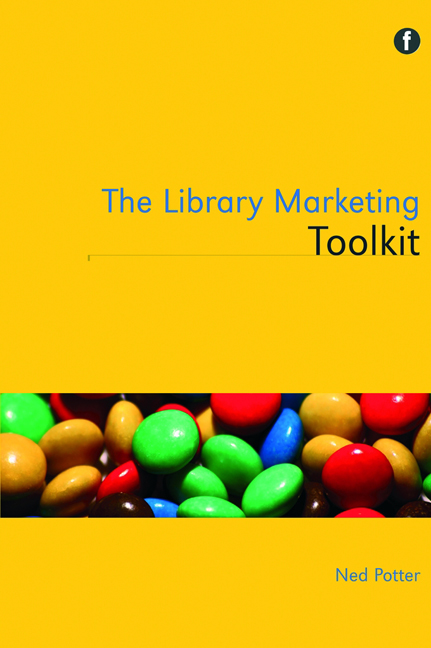Book contents
- Frontmatter
- Dedication
- Contents
- Acknowledgements
- Introduction
- 1 Seven key concepts for marketing libraries
- 2 Strategic marketing
- 3 The library brand
- 4 Marketing and the library building
- 5 An introduction to online marketing
- 6 Marketing with social media
- 7 Marketing with new technologies
- 8 Marketing and people
- 9 Internal marketing
- 10 Library advocacy as marketing
- 11 Marketing special collections and archives
- A final word on marketing libraries
- Appendix: Glossary of Web 2.0 tools and platforms
- References
- Index
6 - Marketing with social media
Published online by Cambridge University Press: 08 June 2018
- Frontmatter
- Dedication
- Contents
- Acknowledgements
- Introduction
- 1 Seven key concepts for marketing libraries
- 2 Strategic marketing
- 3 The library brand
- 4 Marketing and the library building
- 5 An introduction to online marketing
- 6 Marketing with social media
- 7 Marketing with new technologies
- 8 Marketing and people
- 9 Internal marketing
- 10 Library advocacy as marketing
- 11 Marketing special collections and archives
- A final word on marketing libraries
- Appendix: Glossary of Web 2.0 tools and platforms
- References
- Index
Summary
The term ‘social media’ describes any kind of online platform in which the users can exchange content. That content can be actual digital objects (films, music and other files) or just opinions, news and views. As such, these platforms represent a fabulous possibility for libraries. It is not something to fret about or agonize over; it is an opportunity to be seized. Via social media libraries can market directly to their users and potential users, and engage them in the kind of proper dialoguewhich marketing should be all about.
Using social media as a marketing channel is very straightforward. Here is a quick analogy to try and explain the value of social media to the sceptics. Imagine you have a poster advertising your library – it contains some (static) information, presents it well, and you put your poster up all over town and hope the right people see it. You never know for sure how many people see it, or what they think of it. But you cross your fingers and hope it works. Now imagine a poster which is interactive and whose information can change from day to day – imagine taking that poster individually to hundreds or even thousands of potential users at once and getting their feedback on it, answer ing their questions, even monitoring what they say about the poster in your absence and adapting it to suit them better. That's what social media does.
And on top of all that, it's mostly free.
Do your patrons use social media?
The short answer is: yes. The longer answer is: of course, there will be excep tions, but increasingly more and more of your target audience will be using one form of social media or another. Worldwide, people spend on average more time on social media each week than they do on email (TNS, 2010).
At the time of writing there are 11.7 million active social networkers in Canada, 114.5 million in the USA and 7 million in Australia.
- Type
- Chapter
- Information
- The Library Marketing Toolkit , pp. 91 - 118Publisher: FacetPrint publication year: 2012



